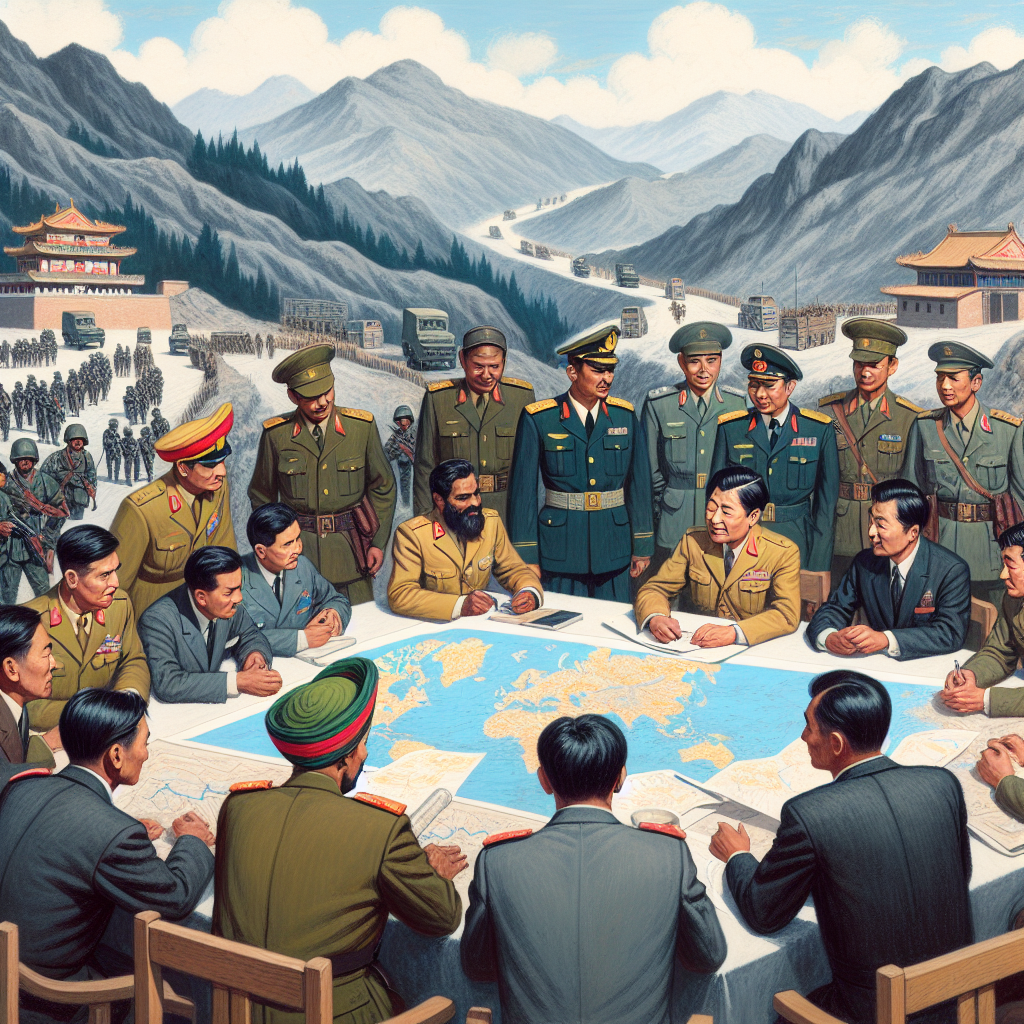Title: India and China Seek Stability: Reviewing Border Improvements
Introduction
The longstanding tensions between India and China, two of Asia's largest powers, have often dominated headlines, especially with their competing interests along the Line of Actual Control (LAC). However, recent talks between these nations signal hope in resolving border disagreements and working towards meaningful collaboration. In their latest dialogue, topics like shared water resources and the revival of the religious Kailash-Mansarovar Yatra have drawn attention globally. This growing cooperation marks not only a new chapter for bilateral relations but also has significant implications for the geopolitical dynamics of the region.
India-China Relations: A Historical Overview
India and China share a complex history influenced by both cultural exchanges and conflict. Their border disputes stem from colonial-era boundary demarcations that left uncertainties surrounding the LAC. Since the 1962 Sino-Indian war, sporadic skirmishes and standoffs have plagued the relationship. The 2020 Galwan Valley clash, resulting in casualties on both sides, reignited tensions and highlighted the volatility of their shared border zones.
Despite these tensions, India and China have also recognized the potential benefits of collaboration. As neighbors and economic powerhouses, their stability is crucial for regional security and economic growth. Recent conversations offer a glimpse of what constructive dialogue can achieve amid lingering mistrust.
Key Takeaways From the Review Meeting
The comprehensive meeting addressed issues that extend beyond border skirmishes. Here are some core topics that emerged:
1. Line of Actual Control (LAC) Stability
The primary focus was reviewing the situation along the LAC. Both nations emphasized reducing military presence in sensitive areas to prevent further confrontations. Although complete demilitarization seems unlikely, confidence-building measures could lower the risk of accidental escalation.
2. Cross-Border Cooperation
Discussions introduced ideas to resume joint projects that had been halted due to rising tensions. These include ecosystem protection and disaster management, especially in Himalayan regions prone to earthquakes and floods.
3. Trans-Border Rivers Management
Water sharing has been a long-standing issue, with India concerned about China’s dam-building activities in Tibet that could impact downstream flow into Indian territories. Both nations agreed to establish transparent protocols for exchanging hydrological data, ensuring equitable water resource sharing.
4. Revival of Kailash-Mansarovar Yatra
This sacred pilgrimage route attracts thousands of Indian devotees annually seeking spiritual solace at Mount Kailash and Lake Mansarovar in Tibet. Its revival signifies not just cultural sensitivity but also an attempt to foster goodwill and people-to-people connections.
Why This Dialogue Matters Now
1. A Step Towards Regional Stability
With the world grappling with economic uncertainty and geopolitical shifts, Asia's stability directly impacts global markets and political alliances. Cooperation between India and China could reduce tensions and prevent neighboring countries from choosing sides.
2. Economic Interdependence
Bilateral trade between India and China reached over $125 billion in 2022, underscoring their economic interdependence despite political strains. Strengthening ties benefits both economies by ensuring smoother supply chains and investment opportunities.
3. A Diplomatic Win for Multilateralism
Both countries hold influential roles in forums like BRICS, the SCO (Shanghai Cooperation Organisation), and the G20. Their collaboration strengthens multilateral approaches towards global challenges like climate change, technology regulation, and infrastructure growth.
Challenges That Persist
While India and China’s progress is promising, challenges remain:
- Distrust: Historical grievances and military build-ups have rooted mistrust deeply in both nations. Restoring confidence will take time and consistent effort.
- Third-Party Influences: External players like the US have a vested interest in the Indo-Pacific, potentially complicating relations.
- Competing Visions: India's democratic framework and China’s centralized governance often lead to ideological clashes. Achieving harmony requires balancing competing visions of governance and diplomacy.
Conclusion
The recent review between India and China offers hope in one of Asia’s most precarious relationships. From improving border stability to fostering cultural ties, these efforts underline the importance of dialogue in resolving conflicts. However, achieving lasting peace will demand patience, mutual respect, and the ability to navigate complex geopolitical landscapes.
As these Asian giants deliberate, the world watches closely. After all, their cooperation—or lack thereof—will shape the future of the region and beyond. For individuals, businesses, and policymakers, understanding these dynamics is crucial to anticipating global trends in security, trade, and diplomacy.
FAQs
1. What is the Line of Actual Control (LAC)?
The Line of Actual Control is the demarcation separating Indian and Chinese-controlled territories. Its exact boundaries are disputed, leading to military standoffs and confrontations.
2. Why is the Kailash-Mansarovar Yatra significant?
It is a spiritual pilgrimage for Hindus, Buddhists, Jains, and Bon practitioners to visit Mount Kailash and Lake Mansarovar in Tibet, considered sacred places. Revival of this route reflects efforts to foster cultural and religious ties.
3. How do trans-border rivers affect India and China?
India’s dependency on waters originating in Tibet has led to concerns over China’s dam-building initiatives. Proper cooperation on water data exchange is vital for ensuring ecological balance and equitable water distribution.
4. Can India and China achieve lasting peace?
While recent talks are encouraging, deep-rooted distrust and unresolved issues like territorial claims will make lasting peace challenging without long-term commitment from both sides.
5. How does India-China cooperation impact global politics?
Collaboration between these nations strengthens regional stability, fosters economic integration, and promotes multilateralism in tackling global challenges like climate change and trade tensions.
Related Tags
#IndiaChinaRelations #LAC #Geopolitics #AsianDiplomacy #KailashMansarovar #CrossBorderCooperation #RegionalStability
Final Note: As India and China initiate these vital conversations, individuals and organizations must stay informed to understand the larger implications of their evolving relationship. These developments offer valuable lessons in diplomacy, compromise, and international cooperation. 🌏
